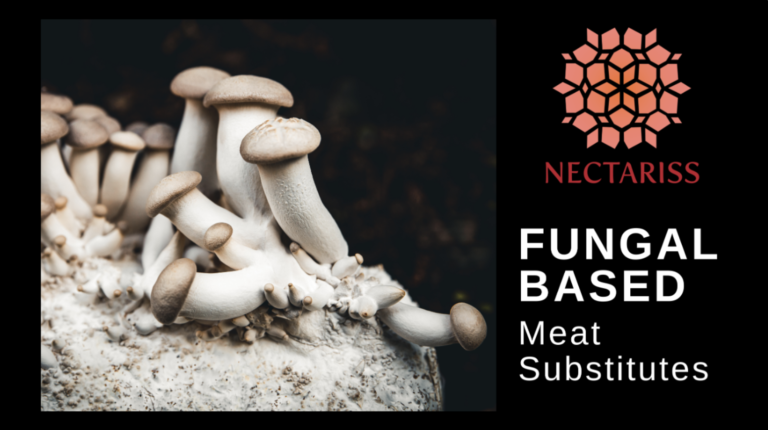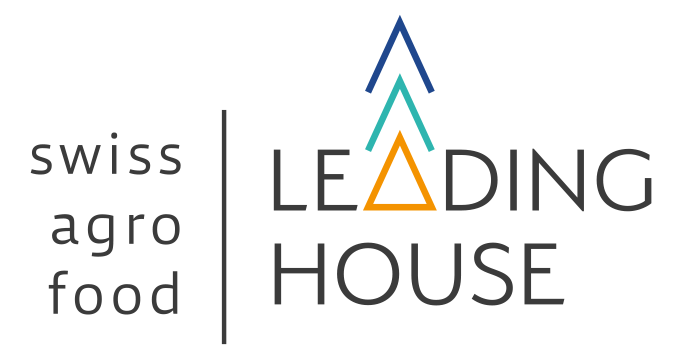Harnessing the Power of Fungi for the Next Generation Green Revolutiony
by Richard Splivallo

Our goal is to provide a fungal-based alternative to meat that is overall ecologically more friendly and healthier than current plant-based alternatives. This will be achieved by cultivating mycelium, the “root of fungi”, and conditioning this fungal biomass into edible meat substitutes. The advantages of such an approach are briefly outlined in the following paragraphs.
The global meat sector is currently going through an unprecedented level of disruption that has been mostly driven by plant-based alternatives. This movement is widely adopted by flexitarians, consumers who, unlike vegan nor vegetarian, still eat meat but wish to reduce their meat consumption because of ethical reasons. Plant-based meat alternatives nevertheless present numerous bottlenecks: some need a complex ingredient list to mask bitter flavors, other contain gluten, many are highly processed, and overall plant-based meat alternatives might contain herbicides and pesticides traditionally used in agriculture.
Fungi, a group of organisms that include yeasts, molds and mushrooms, offer superior solutions for meat alternatives compared to plants. Indeed, unlike plant proteins that need a high level of processing to acquire a meat structure, fungi tend to be umami-rich and have a texture that naturally resembles meat. Additionally, fungi do not contain bitter flavors that require masking with complex ingredients. Last, high levels of fungal biomass can be efficiently grown on agricultural by-products, hence contributing to a circular economy. This overall demonstrates the advantage of using fungi compared to plants for meat alternatives.
The idea of using fungi for meat alternatives is not novel per say, even if, to the best of our knowledge, such a product has yet to be developed by a Swiss company (and we are working on this at the startup Nectariss). Foreign US-based companies such as Prime Roots or Meati Foods both offer fungal-based meat alternatives. However, those companies use mass produced ingredients to grow their fungi, and this is what we want to do differently. We want to use regional agricultural by-products to be able to put forward regional flavor differences. Think about how different a “fondue valaisanne” and “fondue fribourgoise” are, in the same way, the same fungus combined with agricultural by-products from different regions could lead to characteristic flavor differences.
This approach could, unlike current meat-substitutes that are rather homogeneous in flavor, preserve regional differences and contribute to the excitement of local food and food tourism.
The meat-substitute market is forecasted to reach globally CHF 33 billion by 2027. End-consumers for meat-alternatives fall into different categories of flexitarians (meat eaters but want to reduce their meat consumption), of vegetarian and vegans, but also to LOHAs (Lifestyles of Health and Sustainability) a segment of consumers who relate to sustainable living, healthy food and “green” ecological initiatives. Our approach of declining fungal-based meat alternatives with local flavors would also certainly be appealing to foodies, amateur enthusiasts of food and wine, hence further increasing the potential market size of meat-alternatives.
Having defined the target segment with clarity, one must acknowledge that various business models can be considered here, and these in turn would define who our customers would be. To cite two scenarios, the services / fungal fermentation platform could directly be proposed to regional (i.e. cantonal in Switzerland) farmer associations interested to transform their own agricultural by-products into added value meat substitutes. Alternatively, traceable agricultural by products could be purchased by a single company that would transform them through fungal based meat-substitutes and sell those to customers (i.e. supermarkets, local groceries) etc. Clearly, additional solutions or mixed business models exist, each with specific pros and cons. Eventually those models will need to be tested/validated with more market insights (market studies, pilot tests etc.). Those tests should firstly be carried out in Switzerland and neighboring European countries (i.e. France, Germany).
Pilot plant, food analysis
- Environmental Sustainability: Unlike plants of animal farming, generation of fungal biomass through fermentation does not require herbicides or pesticides, hence minimizing environmental impact. The technology also permits to produce locally reducing CO2 emission and other pollution related to transportation.
- Social Sustainability:The business model/idea presented here would empower farmers, who would no longer be the mere supplier of crops that are so transformed by the food industry that no-one knows where they are coming from. In the contrary, farmers would directly contribute to global sustainability through a low processed meat-alternative directly grown out of their own agricultural by-products.
- Economic sustainability: Economic sustainability would be achieved essentially by contributing to a circular economy (reducing agricultural waste, by product) and also as mentioned earlier by even encouraging food related tourism to taste local plant-based specialties.
#2 End hunger, achieve food security and improved nutrition and promote sustainable agriculture. How the solution proposed here improves agricultural sustainability have been highlighted above.
#8 Promote sustained, inclusive and sustainable economic growth, full and productive employment and decent work for all. Sustainable economic growth can be better achieved by a circular economy which is specifically improved by our approach.
#12 Ensure sustainable consumption and production patterns. Being able to use agricultural by-products certainly contributes to a more sustainable production system as it levels out risks between good and bad year depending on weather conditions/pests.
#13 Take urgent action to combat climate change and its impacts. Producing local reduced CO2 emission and so does the consumption of meat alternatives.
#15 Protect, restore and promote sustainable use of terrestrial ecosystems, sustainably manage forests, combat desertification, and halt and reverse land degradation and halt biodiversity loss. Fungi have the potential to generate a much higher biomass than plant per m2, and do not require soil to grow (i.e. bioreactors), overall greatly reducing the environmental impact linked to agricultural runoffs, soil erosion and biodiversity loss.
